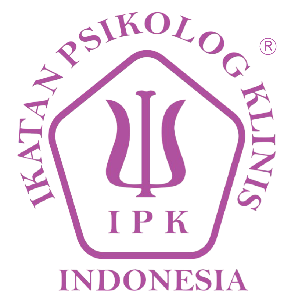Aplikasi Teknik Shaping dan Token Ekonomi untuk Meningkatkan Durasi Perilaku On-Task pada Anak dengan ADHD
The Application of Shaping Technique and Token Economy to Increase On-Task Behavior in a Child with ADHD
DOI:
https://doi.org/10.26740/jptt.v12n1.p64-80Keywords:
perilaku on-task, teknik shaping, ADHD, predominantly inattentive type, token economyAbstract
Children with ADHD usually have difficulty on performing on-task behaviors, that relates to their ability of sustaining attention. This problem often results in poor academic performance and academic failure at school. Therefore, intervention is required to increase their on-task behavior that can improve the ability to sustain their attention. Behavior modification with shaping technique has been proved effective for treating ADHD children with attention problem. This study used shaping technique and token economy as the reinforcement technique to increase the duration of on-task behavior. The participant of this study was a 7-year-8-months-old boy who met some criteria of ADHD predominantly inattentive type in DSM V. The research method used is single subject with ABA design. This study used four instruments, namely ADHD-criterion checklist, ABC observation sheet, behavior observation sheet, and reinforcement inventory. The result showed that shaping technique can increase the duration of on-task behavior gradually from 3 until 16 minutes, but decreased until 13 minutes in post-intervention. This increase occurs since the shaping and token system were applied simultaneously, and extraneous variables were controlled.
Keywords: ADHD, predominantly inattentive type, on-task behavior, shaping technique, token economy
Abstrak: Anak-anak dengan ADHD mengalami kesulitan dalam menampilkan perilaku on-task yang berhubungan dengan kemampuan mempertahankan perhatian. Hal ini menyebabkan kinerja akademik yang lemah dan kegagalan akademik di sekolah. Untuk meminimalkan dampak tersebut, intervensi dibutuhkan untuk me-ningkatkan perilaku on-task yang dapat meningkatkan kemampuan mempertahankan perhatian. Penelitian ini menggunakan intervensi dengan teknik shaping dan token economy untuk meningkatkan durasi perilaku on-task. Seorang anak laki-laki yang didiagnosa ADHD predominantly inattentive type berdasarkan kriteria DSM V menjadi partisipan. Metode yang digunakan adalah single subject dengan desain ABA, meliputi pre test, intervensi, dan post-test. Empat jenis instrument digunakan untuk koleksi data, yaitu lembar checklist kriteria ADHD, lembar observasi ABC, lembar observasi perilaku, dan reinforcement inventory. Hasil penelitian menunjukkan bahwa teknik shaping dapat meningkatkan durasi perilaku secara bertahap dari 3 hingga 16 menit, namun menurun sampai 13 menit saat pasca intervensi. Peningkatan durasi perilaku on-task terjadi karena penerapan teknik shaping dan token economy secara bersamaan, serta adanya kontrol terhadap variabel eksternal yang dapat mengganggu atensi partisipan.
References
Anjani, S., & Tjakrawiralaksana, M. (2019). Penerapan teknik shaping untuk meningkatkan durasi on-task behavior pada anak dengan masalah atensi. Jurnal Ilmiah Psikologi Terapan, 7(2), 184-198. https://doi.org/10.22219/jipt.v7i2.9051
Ball, R. (1997). Influencing the on-task and off-task behaviours of children who have attention problems or attention deficit hyperactivity disorder through the use of a token economy and self-management. (Theses Honours). Edith Cowan University, Australia. https://ro.ecu.edu.au/theses_hons/783/
Barkley, R. (2015). Attention-deficit hyperactivity disorder: A handbook for diagnosis and treatment, fourth edition. The Guilford Press.
Biederman, J., Fried, R., Petty, C., Mahoney, L., & Faraone, S. (2012). An examination of the impact of attention-deficit hyperactivity disorder on IQ: A large controlled family-based analysis. The Canadian Journal of Psychiatry, 57(10), 608-616. https://doi.org/10.1177/070674371205701005
Brown, T. (2005). Attention deficit disorder: The unfocused mind in children and adults. Yale University Press.
Chairunnisa, R., & Kemala, C. (2020). Penerapan teknik shaping untuk meningkatkan durasi perilaku on-task anak dengan masalah atensi. Jurnal Psikologi Insight, 4(1), 15-31. https://ejournal.upi.edu/index.php/insight/article/view/24636
Costa, D., Paula, J., Junior, A., Diniz, B., Romano-Silva, M., Malloy-Diniz, L., & Miranda, D. (2014). ADHD inattentive symptoms mediate the relationship between intelligence and academic performance in children aged 6-14. Revista Brasileira de Psiquiatria, 36(4), 313-321. https://doi.org/10.1590/1516-4446-2013-1201
Firmin, M., & Phillips, A. (2009). A qualitative study of families and children possessing diagnoses of ADHD. Journal of Family Issues, 20(10), 1-20. https://doi.org/10.1177/0192513X09333709
Godwin, K., Almeda, M., Petroccia, M., Baker, R., & Fisher, A. (2016). Classroom activities and off-task behavior in elementary school children. Proceedings of the 35th Annual Meeting of the Cognitive Science Society, 2428-2433. https://escholarship.org/uc/item/8mx9h5hq
Graham-Day, K., Gardner, R., & Hsin, Y. (2010). Increasing on-task behaviors of high school students with attention deficit hyperactivity disorder: Is it enough. Education and Treatment of Children, 33(2), 205-221. https://doi.org/10.1353/etc.0.0096
Green, C., Long, D., Green, D., Iosif, A., Dixon, J., Miller, M., . . . Schweitzer, J. (2012). Will working memory training generalize to improve off-task behavior in children with attention-deficit/hyperactivity disorder? Neurotherapeutics, 9(3), 639-648. https://doi.org/10.1007/s13311-012-0124-y
Jepsen, J., Fagerlund, B., & Mortensen, E. (2009). Do attention deficits influence IQ assessment in children and adolescents with ADHD? Journal of Attention Disorders, 2(6), 551-562. https://doi.org/10.1177/1087054708322996
Kofler, M., Mark, D., & Alderson, R. (2008). Quantifying ADHD classroom inattentiveness, its moderators, and variability: A meta-analytic review. Journal of Child Psychology and Psychiatry, 49(1), 56-69. https//doi/org/10.1111/j.1469-7610.2007.01809.x
Lantz, C., McKenna, B., Price, B., & Stralow, D. (2007). Increasing on-task behavior through motivational activities. (Master's theses). Saint Xavier University, USA. https://eric.ed.gov/?id=ED496134
Lebowitz, M. (2013). Stigmatization of ADHD: A developmental review. Journal of Attention Disorders, XX(X), 1-7. https://doi.org/10.1177/1087054712475211
Livingstone, L., Coventry, W., Corley, R., Willcutt, E., Samuelsson, S., Olson, R., & Byrne, B. (2016). Does the environment have an enduring effect on ADHD? A longitudinal study of monozygotic twin differences in children. Journal of Abnormal Child Psychology, 44(8), 1487-1501. https//doi.org/10.1007/s10802-016-0145-9
Loe, I. M., & Feldman, H. M. (2007). Academic and educational outcomes of children with ADHD. Journal of Pediatric Psychology, 32(6), 643-654. https://doi.org/ 10.1093/jpepsy/jsl054
Mackenzie, G., & Wonders, E. (2016). Rethinking intelligence quotient exclusion criteria practices in the study of attention deficit hyperactivity disorder. Frontiers in Psychology 7(294). https://doi.org/10.3389/fpsyg.2016.00794
Mahanani, F. (2017). Operant conditioning: shaping dan positive reinforcement contingencies "dari perilaku off-task menjadi on-task. Intuisi Jurnal Psikologi Ilmiah, 9(3), 276-289. https://doi.org/10.15294/intuisi.v9i3.14119
Mangunsong, F. (2016). Psikologi dan pendidikan anak berkebutuhan khusus. Lembaga Pengembangan Sarana Pengukuran dan Pendidikan Psikologi (LPSP3)
Martin, G., & Pear, J. (2015). Behavior modification: What it is and how to do it. Pearson.
Mash, E., & Wolfe, D. (2013). Abnormal child psychology (5th edition). Cengage Learning.
Miltenberger, R. (2012). Behavior modification: principles and procedures, (5th ed.). Wadsworth Cengage Learning.
Nasa, A., Pudjiati, S., & Tjakrawiralaksana, M. (2018). Application of a shaping technique to increase on-task behavior duration in children with ADHD. Advances in Social Science, Education and Humanities Research (ASSEHR), 135, 149-165. https://doi.org/10.2991/iciap-17.2018.13
Pena, I., Pan, M., Thai, C., & Alisso, T. (2020). Attention-deficit/hyperactivity disorder predominantly inattentive subtype/presentation: Research progress and translational studies. Brain Sciences, 10(292), 1-28. https://doi.org/10.3390/brainsci10050292
Plamondon, A., & Martinussen, R. (2015). Inattention symptoms are associated with academic achievement mostly through variance shared with intrinsic motivation and behavioral engagement. Journal of Attention Disorders, 1-13. https//:doi.org/10.1177/1087054715587098
Resnick, A., & Reitman, D. (2011). The use of homework success for a child with attention-deficit/hyperactivity disorder, predominantly inattentive type. Clinical Case Studies, 10(1), 23-36. https://doi.org/10.1177/1534650110391653
Schellack, N., & Meyer, J. (2012). The management of attention-deficit/ hyperactivity disorder in children. S Afr Pharm J, 79(8). https://www.researchgate.net/publication/260513461_The_management_of_attention-deficit_hyperactivity_disorder_in_children
Summey, C. (2018). Self-monitoring to increase on-task behavior using the MotivAider (Electronic Theses and Dissertations). East Tennessee State University, USA. https://dc.etsu.edu/etd/3450/
Tannock, R. (2007). The educational implications of attention deficit hyperactivity disorder. The Literacy and Numeracy Secretariat.
Wolraich, M., Hagan, J., Carla, A., Chan, E., Davison, D., Earls, M., . . . Zurhellen, W. (2019). Clinical practice guideline for the diagnosis, evaluation, and treatment of attention-deficit/hyperactivity disorder in children and adolescents. American academy of pediatrics, 144(4). https://doi.org/10.1542/peds.2019-2528
Downloads
Published
How to Cite
Issue
Section
License
Copyright (c) 2021 Jurnal Psikologi Teori dan Terapan

This work is licensed under a Creative Commons Attribution-NonCommercial 4.0 International License.
Authors who publish in this journal agree to the following terms:
Copyright in any article is held by the author.
The author grants the journal, publication rights with the work simultaneously licensed under a Creative Commons Attribution License that allows others to share the work with an acknowledgment of the work's authorship and initial publication in this journal.
Authors may enter into separate, additional contractual arrangements for the non-exclusive distribution of the journal's published version of the work (e.g., posting it to an institutional repository or publishing it in a book), with an acknowledgment of its initial publication in this journal.
Authors are permitted and encouraged to post their work online (e.g., in an institutional repository or on their website) prior to and during the submission process, as this can lead to productive exchanges, as well as earlier and greater citation of published work.
 Abstract views: 2923
,
Abstract views: 2923
, PDF Downloads: 3857
PDF Downloads: 3857

















